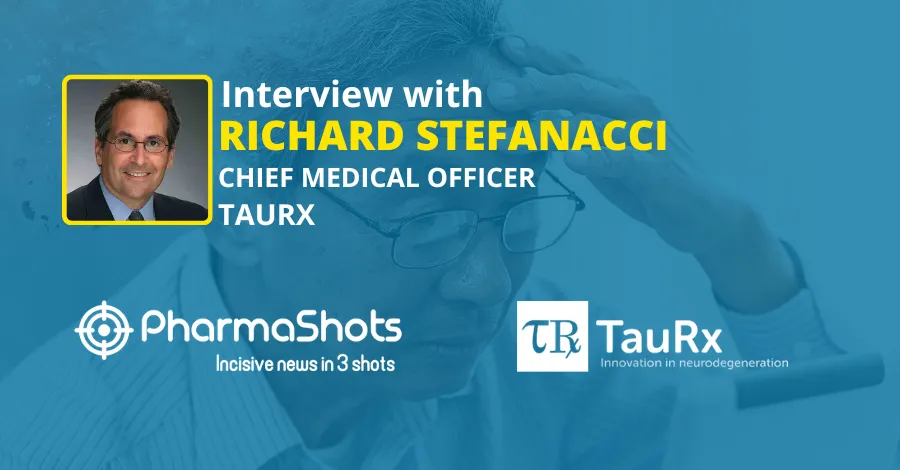
Bettina Cockroft, SVP & CMO at Sangamo Therapeutics Shares Insights from the Positive P-I/II Data for Fabry Disease Treatment
Shots:
-
Bettina gave the details of the study design and shared the preliminary results from the P-I/II STAAR clinical study evaluating ST-920. The data were presented in an oral presentation at the 29th Congress of the European Society of Gene & Cell Therapy 2022
-
She also talked about enzyme replacement therapy (ERT) which is currently used for the treatment of Fabry disease and how ST-920 can be an effective alternative to regular ERT
-
The interview gives an understanding of Sangamo’s aim to create new genomic medicines through its genome engineering technology and manufacturing expertise for diseases that have limited or no treatment options
Smriti: Shed some light on the details (MOA, ROA, formulations, etc.) of ST-920
Bettina Cockroft: Isaralgagene civaparvovec, or ST-920, is a gene therapy product candidate for the treatment of Fabry disease, delivered via a single dose intravenous infusion. The treatment is designed to deliver a healthy copy of the GLA gene to the liver for patients with Fabry disease, so that liver cells can start producing functional α-Gal A.
Smriti: Please highlight the study design of the P-I/II (STAAR) clinical trial evaluating ST-920.
Bettina Cockroft: STAAR is a Phase I/II, dose-ranging, open-label, multicenter study to assess the safety and tolerability of ST-920 in adult patients with Fabry disease. The dose escalation phase of the study has been completed with nine patients dosed, and dosing has been initiated in the expansion phase. On day 1 of the trial, patients are infused intravenously with a single dose of ST-920 and followed for a period of 52 weeks. Patients are then followed in a separate long-term follow-up study for a total of at least 5 years from ST-920 infusion.
This protocol does not use prophylactic steroids or immunotherapy, the use of steroids is reactively implemented when a liver enzyme elevation is detected; none of the patients have been treated with steroids to date.”
Smriti: What were the key findings obtained from the P-I/II (STAAR) clinical trial evaluating ST-920?
Bettina Cockroft: The latest data shows ST-920 continues to be generally well-tolerated and presents sustained α-Gal A activity based on data from nine patients in the dose escalation phase, up to almost two years of follow-up. Additionally, elevated α-Gal A activity was sustained after enzyme replacement therapy (ERT) withdrawal in four subjects, up to 28 weeks. These results reinforce Sangamo's belief that ST-920 may be an alternative to regular ERT since ST-920 directly targets the underlying cause of the disease.
Smriti: How can the treatment with ST-920 provide an alternative to enzyme replacement therapy? Give our readers a comparative overview of them both.
Bettina Cockroft: The current treatment for Fabry disease is enzyme replacement therapy (ERT), an intravenous infusion that is typically administered every other week. The half-life of ERT is very short, so that from a pharmacokinetics perspective, ERT provides very high peaks of enzyme which rapidly fall to trough levels. ST-920 is being tested as a one-time infusion, with the alpha-Gal A enzyme produced in a constant manner and therefore not subject to peaks and troughs. Based on the data to date, ST-920 offers a compelling alternative to regular ERT, with the potential to minimize the patient burden of treating Fabry disease.
Smriti: As you are planning to initiate a P-III trial for ST-920, would you please provide some details of the potential study design?
Bettina Cockroft: We’re actively planning for a Phase 3 trial, discussing potential endpoints, including with world experts in Fabry and with regulatory agencies, and look forward to sharing additional data in the first half of 2023.
Smriti: Are there any other products currently being evaluated under your development pipeline for the treatment of Fabry Disease?
Bettina Cockroft: ST-920 is our only gene therapy product for Fabry disease. Beyond ST-920 for Fabry disease, our pipeline also includes programs focused on areas of other unmet patient needs, such as hemophilia A and sickle cell disease.
Image Source: American Journal of Medical Care
About the Author:

Bettina Cockroft is the Senior Vice President and Chief Medical Officer since September 2019 and oversees all clinical development activities and operations. She has over 20 years of experience in the biopharmaceutical industry and has worked across multiple therapeutic areas and led programs in several countries. Prior to joining Sangamo, Dr. Cockroft served on the senior leadership team at Cytokinetics, Inc., where she was responsible for clinical development of fast skeletal muscle troponin activators in diseases such as Amyotrophic Lateral Sclerosis and Spinal Muscular Atrophy. Dr. Cockroft earned her M.B.A. at MIT Sloan School of Management and her M.D. from the University of Genova.
Tags

Senior Editor at PharmaShots. She is curious and very passionate about recent updates and developments in the life sciences industry. She covers Biopharma, MedTech, and Digital health segments along with different reports at PharmaShots.













